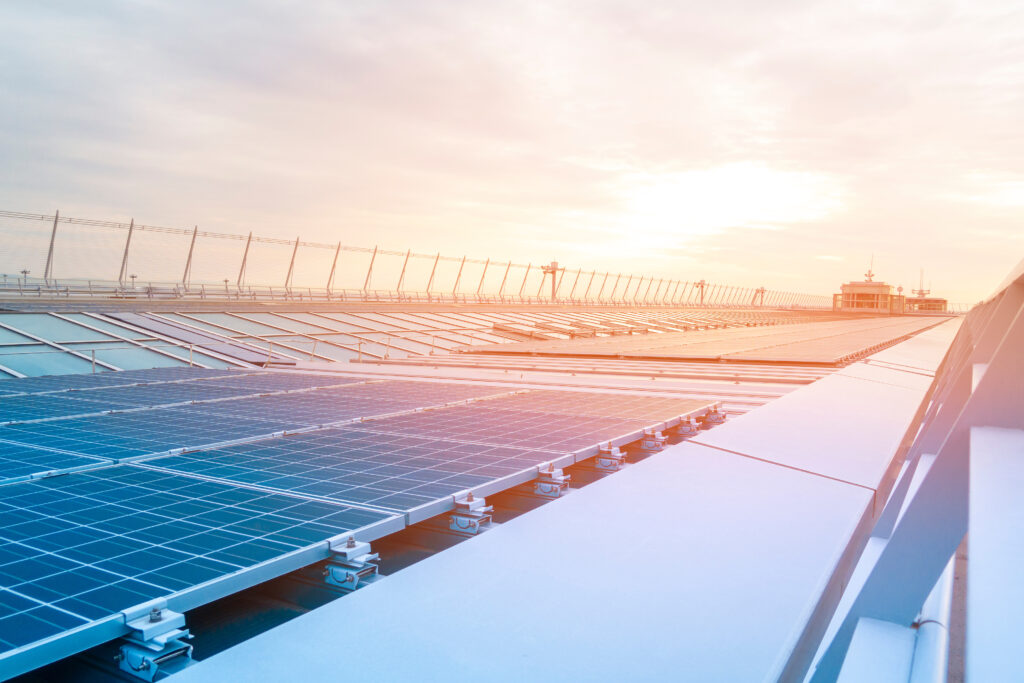The Port Authority of New York and New Jersey (PANYNJ) has agreed on a deal with TotalEnergies to begin construction of New York State’s largest solar carport at John F Kennedy International Airport in 2023.
In 2020, the Port Authority Board of Commissioners authorized the development, construction and operation of New York State’s largest on-site solar plus storage system at JFK Airport. The installation will comprise a carport canopy with solar panels on top of the southern section of the airport’s long-term parking lot 9, providing covered parking for approximately 3,000 vehicles. TotalEnergies will begin construction on the solar carport this year.
The 12.3MW solar energy system at JFK includes 7.5MW of battery storage, to provide resilience to AirTrain JFK. With construction due to begin in 2023, the project is expected to reduce greenhouse gas emissions by nearly 5,300 metric tons annually, and the solar-generated electricity provided to the grid will serve low-income residents who may be eligible to receive credits on utility bills through the New York state community solar program.
Kathy Hochul, governor of New York, said, “New York is taking historic action to combat climate change, from investing in energy affordability to promoting clean air and water to mandating all vehicles sold in New York be zero emission by 2035. The inclusion of a significant solar array as part of the redevelopment of JFK Airport will help reduce greenhouse gas emissions, effectively repurpose heat energy for water management, and will limit the carbon footprint at one of the world’s busiest hubs. We will continue working closely together to create a greener future for our communities, our infrastructure, and our planet.”
As part of the redevelopment of JFK Airport, the future New Terminal One will also feature a rooftop array and integrated microgrid – designed, constructed and operated by AlphStructure – to help reduce its greenhouse gas emissions. The panels – approximately 13,000 of them – will feed energy into an 11.34MW microgrid. Each of the system’s four ‘power islands’ is designed to function as an integrated energy system; together, the microgrid will have 7.66MW of rooftop solar power, 3.68MW of natural gas fuel cells and 4MWh of battery energy storage. Reclaimed heat will be used to chill and heat water. The rooftop’s photovoltaic array alone can create enough electricity to power 1,039 average US homes for a year.
Newark Liberty International Airport’s 5MW solar project at the Terminal A parking garage has generated 1GWh of power after just two months of operation. Installed by energy transition company Engie, the canopy structure atop the parking garage features 12,708 solar panels covering 33,816m2. The project will generate enough energy to power approximately 833 homes. The parking garage features more than 150 electric vehicle chargers for public use. To help reduce cost and energy utilization, the charging stations feature sophisticated load management software so that charging will be shared smartly from the garage’s solar energy and ensures appropriate power output for the number of cars and the duration someone will be parking there.
Newark Liberty’s new Terminal A has been designed and constructed to achieve LEED Silver certification from the US Green Building Council and features a variety of sustainability features including water-efficient fixtures that save more than 45% on potable water demand, a ‘cool roof’ and light-colored pavements to reduce heat gain on the building and heat-island effect on the surrounding environment, energy-efficient indoor lighting and controls, a solar photovoltaic system on the western entrance canopy, regionally procured materials with recycled content, and low-emitting materials and paints to improve indoor air quality. Terminal A was also designed to withstand projected future sea-level rise.
The port authority has also installed more than 3,500 solar panels on the rooftop of the new parking garage on the western side of LaGuardia Airport, which produces more than 1,700,000kWh of clean, renewable energy annually as part of the agency’s net zero emissions targets announced in 2021.
The port authority airports are also providing infrastructure to support electric ground support equipment (GSE) as well as new electric buses to support shuttle operations. On-site solar and other renewable energy initiatives are among seven key areas that the agency’s overall sustainability program encompasses, along with clean electric vehicles, energy efficiency, ‘green’ facilities, clean ship practices for ocean-going vessels, offshore wind, and partnering to combat climate change.
Kevin O’Toole, chairman of the port authority, said, “We became the first US transportation agency to embrace the Paris Climate Agreement and have taken ambitious actions to do our part to mitigate the effects of climate change. As part of our longstanding commitment to environmental sustainability and reducing the emission of greenhouse gases in the New York and New Jersey region, the agency has made significant investments, such as these projects, in solar energy and other renewable energy sources.”
“The agency recognizes the transformative potential of solar energy,” said Rick Cotton, executive director of PANYNJ. “We have established a goal of achieving net-zero greenhouse gas emissions by 2050. These projects at JFK and Newark Liberty are part of the port authority’s aggressive climate action plan to meet the demands of a growing region by embarking on an unprecedented program to build the next generation of world-class infrastructure all while focusing on reducing our environmental impact.”
“Engie is proud to support the port authority’s ambitious sustainability targets, aligned with our mission to accelerate the global transition toward net-zero carbon,” said Stefaan Sercu, chief energy solutions officer at Engie. “Our team is excited to be an integral part of the port authority’s modern approach to becoming a more sustainable airport with the largest solar project built out of any airport structure in the country while improving operations efficiency and reducing emissions.”
To find out more about PANYNJ’s latest developments, click here.

